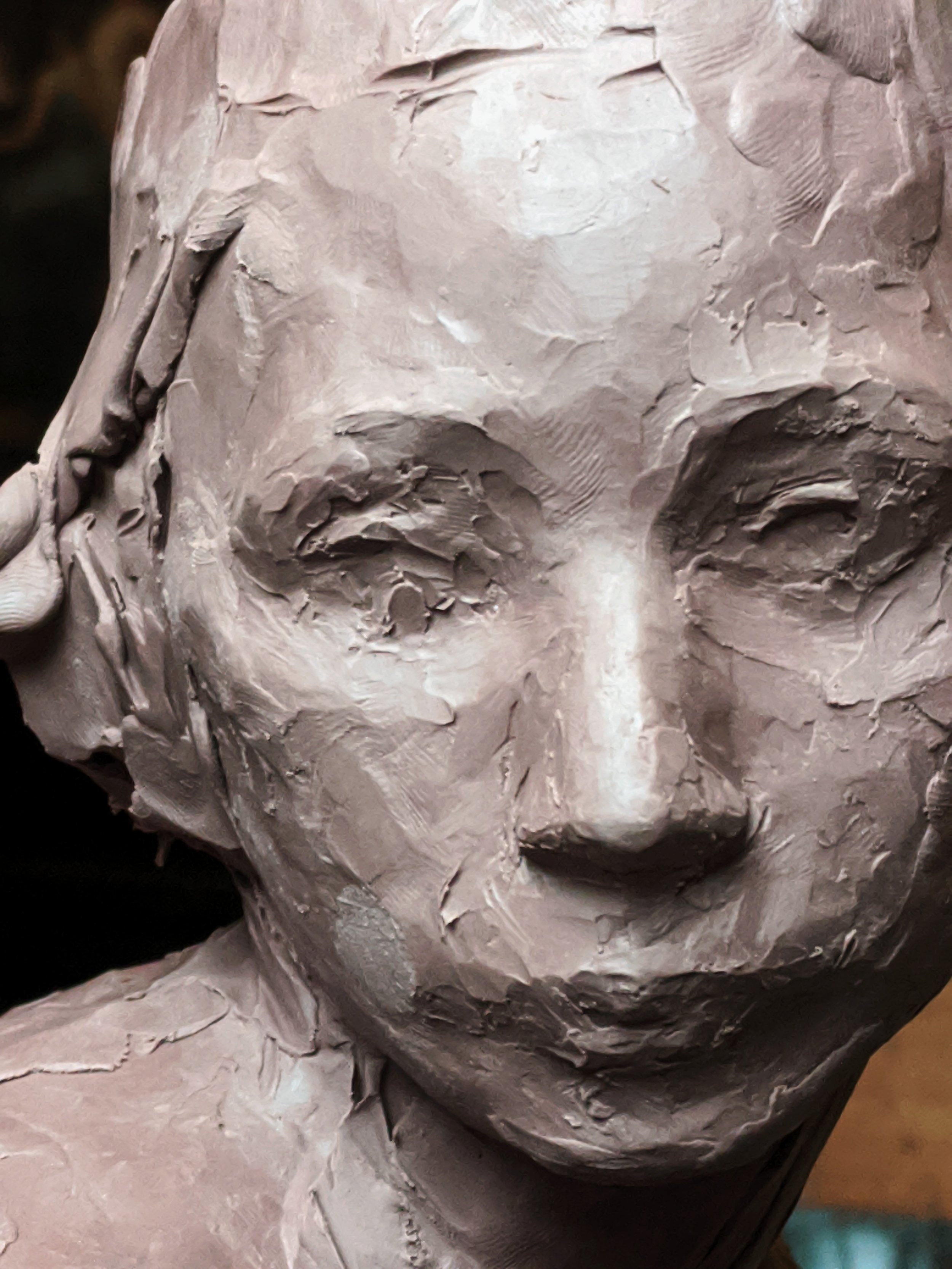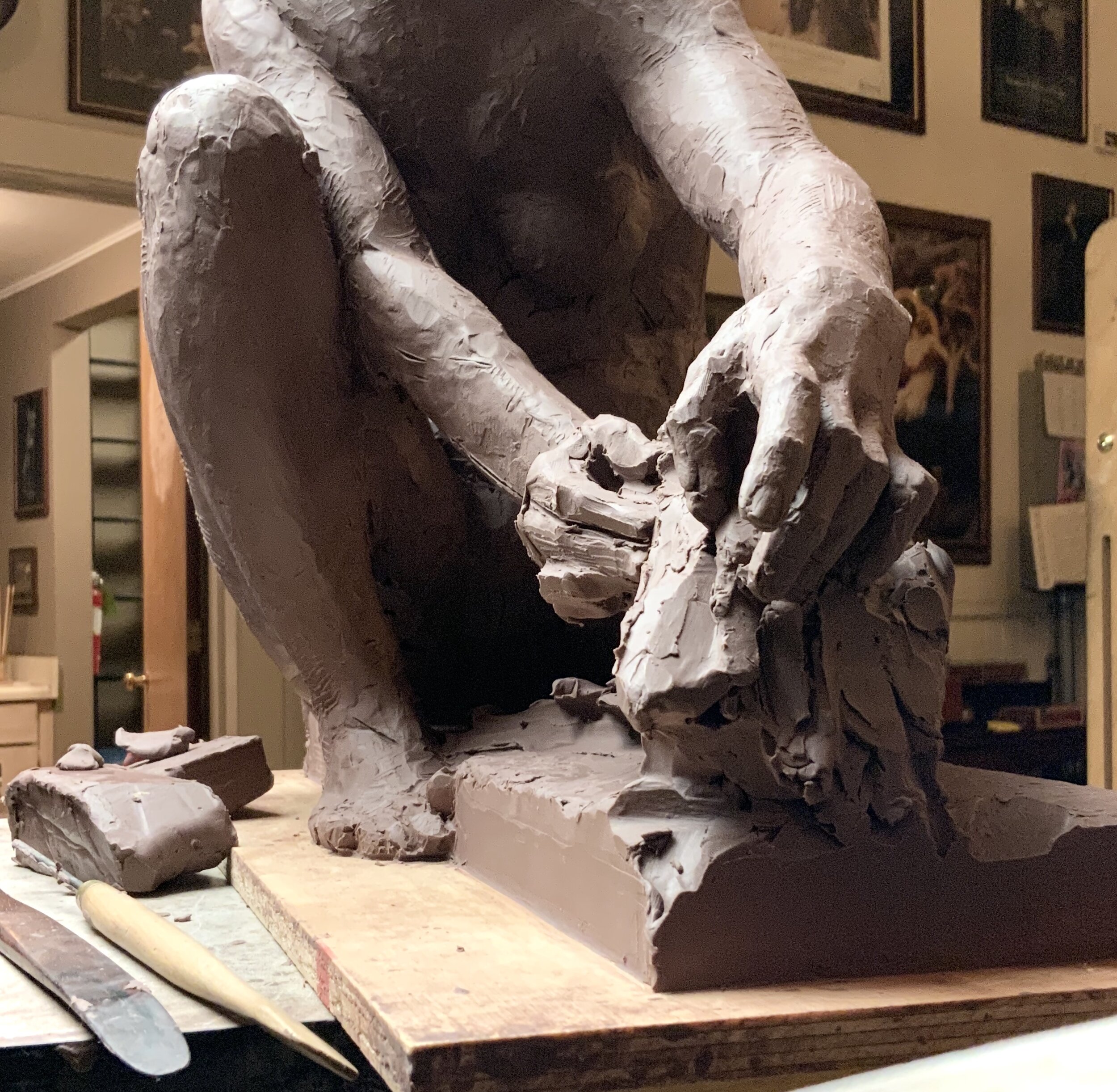Anyone who’s studied with me knows that I make my own wooden clay-modeling tools. Students often ask though, where to purchase tools?… and what type would I recommend? Here are a few basic types that are the most used in my collection, and links to purchase similar tools:
Modeling tools: The three shown above are various sizes of the same design. The larger one is shown from above, while the smaller 2 are shown in profile. These are designed to push and pull clay around, to roll over curves effortlessly, and to leave minimal texture behind.
My beloved Drawing Tool Design: based on a paring knife, thin, made of ebony, long, with a straight side that can be used to assess angles. This exact design is not available anywhere that I know of. I consider a drawing tool to be the most important tool in the kit. Some students have improvised with a butterknife, or a dental tool. I designed my first one by purchasing a ready-made tool and sanding it down to fit my needs. Draw, Draw, Draw!
The Paddle…has become indispensable to me over the last few years. Initially used it for larger work only, but now I have it with me at all times. I make mine out of dense Wenge wood and I favor the rounded corners. I don’t know of a commercially available one, but a dense plank of hard wood will do in a pinch. Make sure it’s long, about an inch or more thick, and feels heavy!
I have a lot of loop tools from tiny sharp wires to large, toothed monsters. I recommend you start collecting them. They are useful for reducing clay, cutting away with a clean slice. They give you more control than a wooden tool when reducing. They are also used often for shaping and surfacing.
The link provided is for “Xiem” tools. They sell the interchangeable wire tools with silicon handles: nicely shaped, comfortable to use, and come with or without teeth. Never throw out a loop tool- I’ll often adjust the shape using my bench grinder, or sharpen the edge, or add wrapping wire…sky is the limit. If you’re taking a class with me, make sure to have large and small wire loop tools.
One more recommendation…when available. Mark Schlicher, a Nashville based sculptor makes a good set of hardwood tools that are a similar style to what I’m showing and are priced reasonably. A great place to start. Write him to get on his mailing list if he’s out of stock: Click Here




































